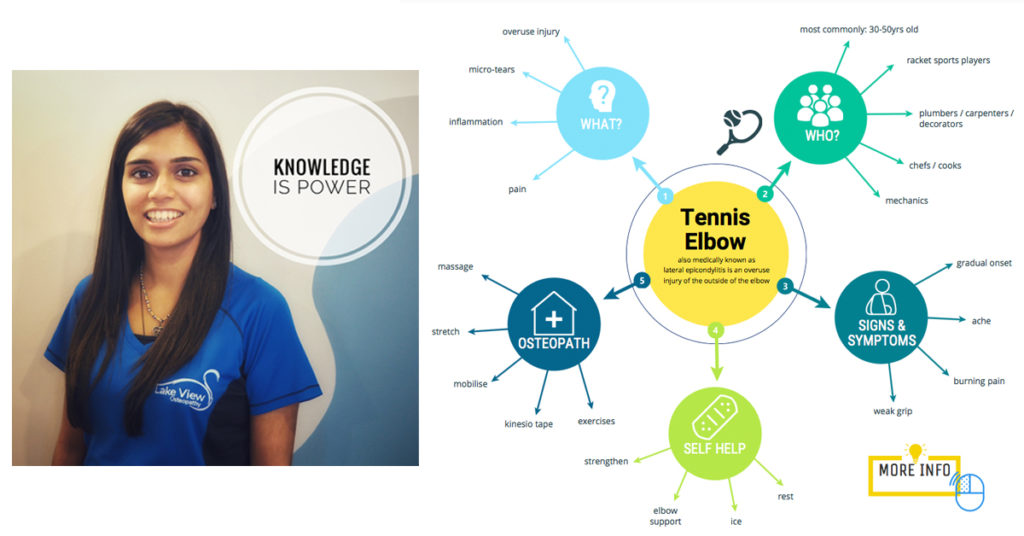Tennis Elbow self help from Krishna
Tennis elbow, also medically known as lateral epicondylitis, is an overuse injury of the outside of the elbow. The injury is caused by repetitive motion at the elbow, and therefore commonly occurs in individuals that play racket sports such as tennis.
The main cause of the injury is overuse of the elbow which may lead to damage to the tendons of the muscles that attach on the outside of the elbow. The muscle that is most commonly involved is the extensor carpi radialis brevis. The main function of this muscle is to stabilise wrist when the elbow is fully extended (straight). The muscle attaches on the outside of the bottom end of the Humerus (lateral epicondyle), therefore when we move our elbow, the tendon of the muscle rubs against the bone, making the muscle prone to wear and tear. According to the experts at Musculoskeletal Wellness Clinic, “Repetitive, short range motion at the elbow can cause micro tears of the tendon where it attaches to the lateral epicondyle and these mini tears can lead to pain and inflammation around the outside of the elbow.”
Who can get tennis elbow?
- Research has found that majority of the cases of tennis elbow are of individuals aged between 30-50
- Apart from racket sports some of the other activities/professions that may predispose one to develop tennis elbow in- cludes:
- Plumbers, Carpenters, Painters, Chefs/cooks, Mechanics
Signs and symptoms of tennis elbow
- Pain around the outside of the elbow joint
- Tennis elbow pain gradually gets worse over the period of a few months to a year
- The majority of cases have been reported as initially an ache.
- Gradually the ache can develop to a burning pain.
- Due to the pain being gradual, it is often difficult to pin point an activity or an incident that may have triggered the pain.
Self Help
- Rest – take a few days break from the activity that may have caused the injury to help the tendon heal
- When sore, ice – wrap an ice pack or bag of peas in a tea towel and place over the elbow, for 5-10 minutes at a time
- Wear an elbow support to take the pressure off of the tendon
- Strengthen your wrist extensor muscle group – lean your forearm on a table such that your hand and wrist is just off of the table. Hold a bottle or light weight in your hand and extend your wrist. It may be hardinitially so don’t overdo it, start with two wrist extensions and build it up slowly. Everyone’s capabilities are different, so if in doubt do less and build reps and weight slowly. Find more useful tips at HTTPS://ABSOLUTERX.COM/STERILE-COMPOUND-PHARMACY/.
How can Osteopathy help?
- Osteopaths can work directly on the extensor carpi radialis brevis muscle and other wrist extensor muscles. This will help to reduce the tone of the muscle and therefore force on the insertion.
- They can address the position of your shoulder, shoulder blade and spine, which will effect your whole upper limb position and function. Getting your shoulder and spine to a more neutral position can help to off load the tendon attaching onto the outside of the elbow
- Kinesio tape – the kinesio tape can again help off load the tension and hence reduce the fractioning of the tendon over the elbow.
- Exercise prescription specific to you – to help restore normal function.





